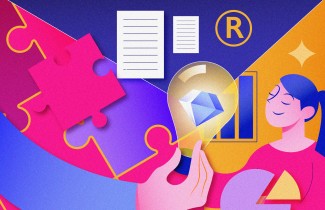Innovation as the Best Resource for Entrepreneurs
How to exploit the most valuable, least expensive resource available to all entrepreneurs
Entrepreneurs have the capacity to do a remarkable thing: create something from nothing. They invite other people to contribute their economic, human capital and relational resources, but the best resource they can capitalize on is innovation. They may have innumerable resources available to them, but if their value proposal is not innovative, these resources will only be used up without generating anything of value.
Since my first entrepreneurship classes at school, I have undergone a long process not only of learning, but also unlearning. At first, it was all good wishes from the mentors and professors, more like cheerleaders than experts in the subject. We did not know what we were doing ... but that is entrepreneurship: exploring a world that is volatile, uncertain, chaotic, ambiguous, and, nowadays, hyperconnected. At that time, we were not talking about innovation, just entrepreneurship.
They made us start companies, although, in fact, we confused small companies with startups. Micro, small, medium and large companies owe their title to the fact that they already know and have mastered their business model, i.e., they know who their customers are, why they buy from them, which products they will sell, their price, their distribution channels, etc. In other words, they are at a stage in life where they create, deliver and capture value, while a startup is not there yet. A company, whatever its size, executes and exploits a validated business model. In contrast, a startup explores, experiments and looks for a business model that will one day turn it into a company.
In 1998, after completing an engineering degree in Mexico and a master's degree abroad, I thought I was ready to start a business. Yes, I actually believed that my startup would be a company right from the first day. I did my homework beforehand. I wrote a business plan, as we were taught at school: from detecting the opportunity, having a mission, vision and values, a market analysis and research, a production and operations plan, a legal strategy, and a financial plan with its appropriate projections (I had even calculated net present values and internal rates of return).
When I executed the plan, I came face to face with Mike Tyson who knocked me out in the first round. By Mike Tyson, I mean my customers. I thought they would be crazy about my product. But I was so wrong ... None of the projections and calculations from the business plan were any good. The people who I thought would be my customers didn't need my product. And they knocked me out.
I had to completely rethink the business model, learning from my clients' comments. My model was only slightly or not at all innovative. It was just like many other businesses, solving the same problem in the same way. Who would want to change suppliers for one that offers exactly the same thing?
Clayton Christensen (who died in 2020) coined the term disruptive innovation. Being disruptive is probably the great dream of an innovator because it makes people forget how we used to do things and adopt the new way. Mobile phones disrupted traditional telephones, email traditional mail, cars carts, etc. But how did we get to this level of innovation? Christensen says that “innovation can be a predictable process that provides sustained, profitable growth...” and contributes solutions to identify innovative ideas that really stir up the status quo. That’s great news! It means that innovation is a process, not divine inspiration, but a process that requires a lot of work.
I am not suggesting that all of our innovations should be disruptive. But delivering solutions to the real problems or needs of our customers (internal and/or external) with value proposals that are superior to those currently delivered is imperative. Innovation is problem solving, needs, pain, work to be done or profits for our clients and doing all this in a way that is superior to how it is done today. This requires a great deal of hard work, but fortunately very little money.
If I had known all this in 1998, Mike Tyson's punches would probably have been less painful or would not have knocked me out. As entrepreneurs, we have to embark on a crusade towards innovation. Understand customers, talk to them, live among them, find out what upsets them, what hurts them, what they need and, in this way, develop solutions that are more likely to be accepted. No more of the same. Something that delivers value to customers and makes them exclaim "Wow, where have you been all this time?"
The good news is that we already have the methodologies for innovating, and they all start and end with the customers. They all view the customers’ problems and needs as the key raw material for the innovative process. That is why I can affirm that innovation is the best resource an entrepreneur has.
Originally published in Expansión.



